Modding my X4: Foundations into using the same data format as Elite Dangerous does so I can run my SimPit without changes. Things are coming together nicely 😀
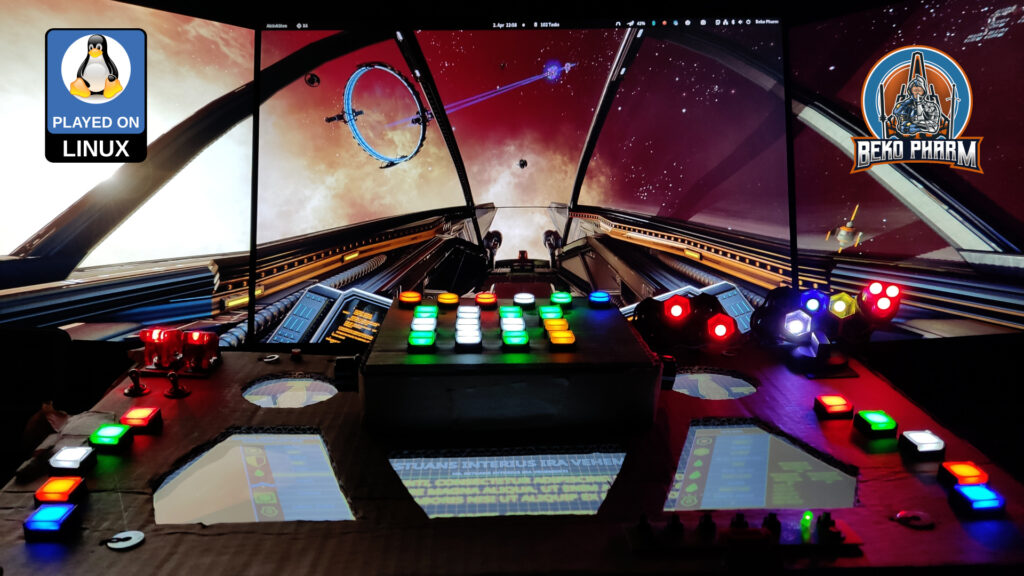


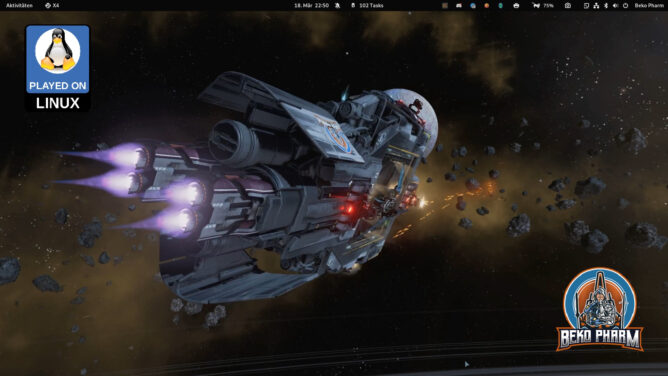
Here are the humble beginnings[1] of a working example to read the ship status of #x4foundations in a format very similar to the Status File of #EliteDangerous

Both games are quite similar and by using a “well established” format it should be possible to use this with existing companion apps – like my own #SimPit
It uses the “Named Pipe API” of “sn_mod_support_apis” – on #Linux PC 😁 This was not supported by this MOD so far but I made it work.
Well, at least on my machine 🤓
And yes, the pipe server works with some minor adjustments for other _existing_ apps as well. Here is a demo of #X4ExternalApp with a data feed directly from X4: Foundations – it does not use the #X4PythonPipeServer though, since that is not really needed, so I had to make some small adjustments in it’s connection routine but that was like 2 lines of code 🤷

[1] TBF the humble beginnings were back in 2021 (https://beko.famkos.net/2021/05/01/getting-into-x4-foundations-modding-on-linux/) but I kinda let it slide to tinker and build my Primary Buffer Panel (https://beko.famkos.net/category/simpit/) first. Other games made it easier to retrieve game data and I did learn a lot during that time but it was X4 that started it all.

Another night in the X4 sandbox: https://www.youtube.com/watch?v=665hXLKSfek / https://tube.tchncs.de/w/pHFP8jZf7PYLyLZSARZQ4T
This is heavily distilled early gameplay of X4: Foundations, where I started another play-through slowly expanding my little empire with trade, side missions, station building, border patrol (loosing the the “Misfit”, my good old starter-ship), a surprise Xenon attack on a station where I was just for shopping and eventually good old fashioned piracy with unexpected guest appearance of some Kha’ak trying to crash the party.
01:11 Setting up trade routes aboard The Law Abiding Windrunner
02:20 Switching over to the Misfit
03:05 Witnessing the death of a trading station (while escorting my own ships to safety)
03:50 Patrolling for money (and looting stuff)
05:48 Repairing satellites (in EVA suit)
07:32 Docking at the impressive Teladi ring station for shopping
08:45 Surprise attack on the ring station by a Xenon K (and it’s demise)
14:32 Extending my own station and buying more mining ships
11:26 Switching over to my frigate for border patrol (lots of pew pew)
14:30 Loosing the Misfit to Kha’ak (and avenging it)
16:07 Going for resupplies and preparing for piracy
16:39 Ambushing the prey, a fat water freighter looking for a new owner
17:59 Starting the boarding operation
18:40 Realizing I need more support to deal with surprises
18:58 Stumbling over mentioned surprises, Kha’ak trying to crash the party
19:51 Sending more boarders as the first group fails
20:22 Finally going home with the price, a “slightly banged up” L water freighter
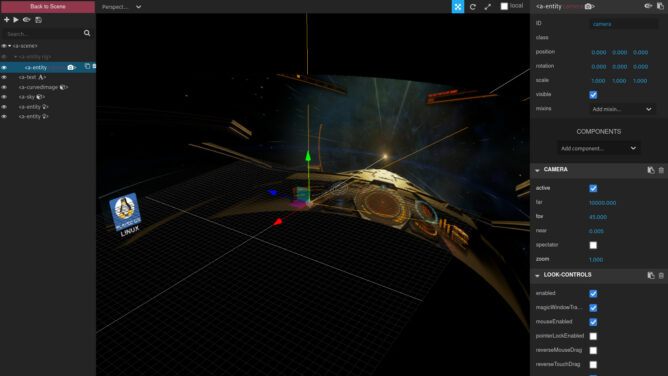
I’m wondering how to present ultra wide screenshots for a while now, because most people will not have an ultra wide display at hand or not run their browser in fullscreen on such a device. A scaled down version with retained ratio also just don’t really cut it:

Now what if we could wrap this in some sort of 360° image? This isn’t really 360°, of course but you get the idea. A quick search usually yields JS libs like Pannellum (https://pannellum.org/), which look great for this use-case as well and yes we could also solve this in CSS by using an animation and go for a little camera ride.
What if we could optionally also make use of a gyroscope though? You know, that sensor every mobile phone, tablet and VR device comes along with. So the user could device where to look just by moving the device around?
This was when I stumbled over A-Frame (https://aframe.io), which is basically a library for building 3D AR or VR experiences and while I may only scratching it’s surface with my quick tests here it does deliver exactly what I was looking for.

I built demos for various games today and I don’t know how long I’ll host the files here but they all follow the very same code pattern that I’ll add in the end:
https://beko.famkos.net/aframe-elite-dangerous.html
https://beko.famkos.net/aframe-fly-dangerous.html
https://beko.famkos.net/aframe-nms.html
https://beko.famkos.net/aframe-rebel-galaxy-outlaw.html
https://beko.famkos.net/aframe-spacebourne2.html
https://beko.famkos.net/aframe-starcitizen.html
https://beko.famkos.net/aframe-x4-foundations.html
Please be aware that I’m loading a ~5mb blob of JS code directly from A-Frame in the demos so don’t check them out if that is a problem for you. The image asset adds another whopping MB so please be patient. The best experience is on a mobile phone where you should be able to look around by moving the phone left and right. It works on a desktop browser too where the mouse can be used to look around.
Here is a code snippet that shows hows it’s done:
<!DOCTYPE html>
<html>
<head>
<script src="https://aframe.io/releases/1.4.1/aframe.min.js"></script>
</head>
<body>
<a-scene loading-screen="dotsColor: #ff6a00; backgroundColor: black">
<a-assets>
<img id="sky" src="./wp-content/uploads/2023/03/elite_dangerous_odyssey_for_my_valentine.jpg">
</a-assets>
<a-entity id="rig" position="-8 0 0" rotation="0 90 0">
<a-entity id="camera" camera="fov:45; zoom: 1" far=90 look-controls></a-entity>
</a-entity>
<a-text color="#fff" value="Elite Dangerous ...on a canvas" width="3" position="-10.5 -0.5 1.5"
rotation="0 135 9"></a-text>
<a-curvedimage src="#sky" height="20.0" radius="10" theta-length="180" rotation="0 180 0"
scale="2.5 1 2.5"></a-curvedimage>
<a-sky rotation="0 0 0" position="0 0 0" color="#000"></a-sky>
</a-scene>
</body>
</html>
Feel free to copy this snippet and play around with it. Just keep in mind that you have to use _local_ assets too or they won’t show up. Make sure to read the documentation too and play with the built in inspector opened with the key combination ctrl + alt + i.
And yes I’ll happily take a CSS only variant too but I really doubt that’s possible without loosing features like gyroscope data usage.
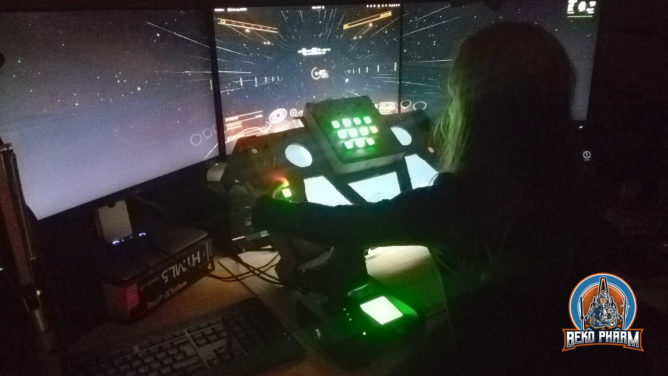
I sure am playing a lot of space pew pew over the last months. Took a lot of screenshots too and it’s kinda hard not to drown my timeline with screenshots every day. Today I sifted through the pile and found a bunch I’d like to share (some again) so here is a little gallery of (mostly) space simulation games I play on my Linux PC. And I’ll keep making that point until I can browse the web without getting daily reminders by random strangers claiming that gaming on Linux PC is not possible. Cuz it is.
Added on 5th January 2022 and played with whatever Lutris thinks best. I really was going to hold out on Star Citizen a little longer but I got it as a gift to my birthday. My GPU is definitely at it’s limit here. Will probably have to give it some more time. I mean it’s Alpha and all but hey, it _does_ work.
This I play mostly under Proton with the Primary Buffer Panel whenever possible. It’s just the most fun this way (kids love it too).
The more recent X series have native Linux builds but work also perfectly fine with Wine.
Both run via Lutris and with Proton-GE and usually with my DIY Headtracker.
FlightGear runs native on Linux and Fly Dangerous does have a native Linux build but due to an issue with terrain generation being single threaded I use Proton for this one too until this is solved. No Man’s Sky runs perfectly with Proton.
I play all of the above with my X52 Pro H.O.T.A.S. and some with my DIY headtracker stretched over three displays in a so called multihead setup. Let me know if you’ve any questions how this can be set up.
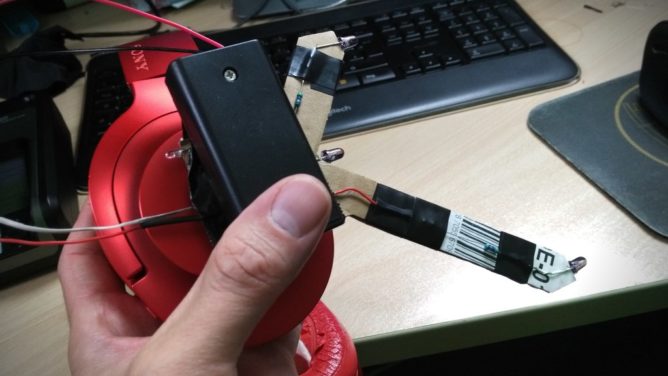
I like space and science fiction. Diving into epic stories set in some distant future amazes me since elementary school.
I’m also a gamer. And a tinkerer. It’s in the family.
I keep wondering: How can I improve the immersion of my games without going full VR?
I used a triple screen set-up before. It consisted of different models in height and size. When one screen finally broke down I purchased 3 refurbished screens of the same brand and model. What a difference!
The kids love it too. Of course. Means less stick time for me. Anyway.
This is when I started to read about head tracking and went on a quest to get this working for the game X4. As a bonus on Linux PC, my preferred system also for gaming.
The thing is: “The” reference product for a headtracker is the TrackIR system. Price as of today: 220 EUR. Ouch! That’s like a cheap VR, right? And it’s Windows only. No thanks.
So I checked what’s in this thing. Apparently a cheap camera, some infra-red LED, and a filter allowing only infra-red waves. And software, of course.
Since this is for Linux I get to pick my poison for the software part, and I settled with Opentrack fast. Onwards to the hardware part. I abused my mobile phone for the testing, sending it’s Gyroscope data via wifi to my PC, and while it worked it also _sucked_. Both, phone and wifi I mean.
Head tracking is awesome. And I knew I want it. So I started prototyping. For this I went with a simple design that I eventually implemented on cardboard. It looks hilarious but it gets the job done.
The focus was on a long life cycle so I wouldn’t have to replace the rechargables in the middle of a session. To get this right I checked with the camera that I was going to use. See (video above), this is way to bright and by trying various resistors I could get this down to 33mA per LED and still get a decent detection rate with Opentrack.
Speaking about the camera. That’s nothing special. It’s a dead cheap 480p Logitech QuickCam Communicate STX that I got from a discounter a decade ago. It was so cheap it doesn’t even _have_ an infra-red filter that I’d have to remove first.
I used tape to attach the salvaged camera cover of a dead G20 controller. That’s a Wii Remote knock-off that does basically the same thing like a headtracker. Various other foils can be used for this as well, as long as they permit infra-red. The idea is to reduce or remove all other light waves but infra-red.
The trick is to also turn off auto exposure and fiddle with the contrast and sharpness until a decent frame rate and a clear infra-red wave source by the LED can be seen.
When I was satisfied with my meter readouts, and my highly professional scribbles, I started working on the prototype while streaming the whole process on the Discord channel of the awesome Fly Dangerous project. If you like racing with a space ship give it a shot.
The prototype is made of cardboard that doubles as isolation for the polarity. The rest is tape and hook-and-loop fastener to attach the headtracker to my headphones. No magic here. The whole contraption is powered by two 1.2V rechargeables. I opted for a micro switch and an additional LED as power indicator, that I dimmed down even more. I can after all not see infra-red so this seemed like a good idea to me. Spoiler: It is.
So how does it play? Over the next weeks I tried basically any game supporting head tracking that I could get my hands on. Please keep in mind that I usually play with lights off but started the studio lights for demo purposes. The tracker does still work just fine.
I quickly found out that each game needs it’s own profile for fine tuned settings. Good thing that Opentrack has me covered on this. First, my beloved X4 using Wine and the TrackIR protocol.
Sadly I came to the conclusion that my GPU is no longer up for the task and Wine would cost me too many frames. I switched Opentrack to emulate a joystick instead and mapped it to camera movements in the native X4 version. It’s not exactly the same but it’s okay-ish. I have an idea how to hack this properly into X4 using an extension and a UDP server but that’s a topic for another day.
Anyway, the same principle works with X Rebirth too, making me even happier. While dated it still has it’s charm and the verse still feels a lot more alive compared to X4. It’s also not taxing my GPU that much.
Now for something different. When Opentrack would list a “protocol” named FlightGear I became very curious. I installed this free and open source flight simulator and crashed my first Cessna into the ground minutes later. By now I’m confident that I can crash a Cessna just about anywhere. I’m not fond of flying in real-life but avionics sure are a fascinating topic.
This was the moment a Steam sale happened and I bagged various flight sims, Space Kerbal and House Of The Dying Sun. All with TrackIR support.
Little did I know what gem I bagged with House Of The Dying Sun by the way. Sadly it’s also very short but I enjoyed every minute of it and will probably play it again. The art, sound and music reminds me a lot of Battlestar Galactica. Easy win 😀
So yeah, this is my current gaming set-up. I built myself a head tracker for 5 EUR. On Linux PC.
I also may have fallen into the rabbit hole called “simpit”.
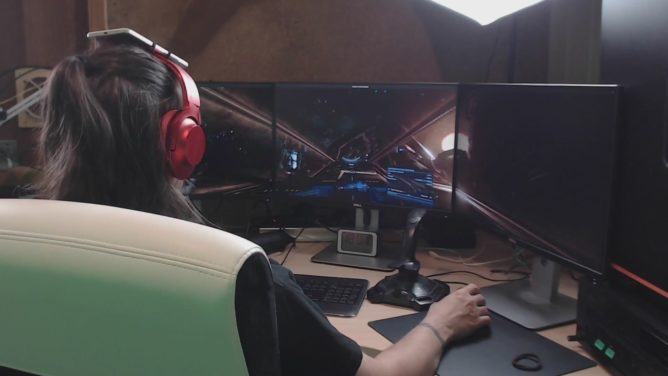
Update Dec 2024: It’s my absolute pleasure to announce that the described hoops are no longer necessary and much of this content is now obsolete. Egosoft added native head tracking via OpenTrack into X4 Foundations starting with the public beta 7.50 after all my nagging! It’s like a miracle. Check a short demo video at https://www.youtube.com/watch?v=rgOkGwMShT0
This is the journey of getting head tracking for X4 Foundations on Linux. Browsing the in-game options I found key bindings to enable and reset a head tracker so I got my hopes high for head tracking for X4 on Linux and started reading.
tl;dr: The native build of X4 does not support this at all. It even lacks the symbols in the executable. There is hope with Wine though.
While seeking through the patch notes two things catched my eye (harhar). The notes suggest support for Tobi Eyetracker and somewhat earlier TrackIR. The Tobi one was marked as “Windows only” so I hoped for TrackIR and tried to understand what is involved into getting this particular head tracking to work.
Please do keep in mind that I never touched any head tracking before so I had to grasp the theory behind all this first.
So apparently there are not many possibilities to configure anything in-game. There is the additional start parameter -forcehmd that may have some effect here but that’s about it. So everything related must come from the outside, right?
Funny enough a Kerbal Space Program extension on GitHub provided me with the idea how TrackIR is supposed to function: https://github.com/pizzaoverhead/KerbTrack/blob/master/KerbTrack/TrackIRClient.cs#L45 so let’s clear that one up: The code looks for the registry entry “Software\\NaturalPoint\\NATURALPOINT\\NPClient Location” that points to the NPClient.dll (or NPClient64.dll) which in turn in loaded by the executable if found and accessed. And sure enough I found the same pattern by using the good old hexeditor on X4.exe as well:
You may suspect this already but none of that can be found in the X4 binary for Linux and this is the end of the story.
Appendix: It might be possible that a joystick look-around thingy may be abused for this but since I do not own such a joystick (yet) I wouldn’t know how to fake such signals.
During my research on head tracking on Linux I stumbled over the website https://tkoletivrijedi.in.rs/node/219?language=en that mentioned the OpenTrack project https://github.com/opentrack/opentrack to play Windows games with Wine on Linux. How cool is that? A quick check suggests that OpenTrack features (also) the output protocol “freetrack” for Windows and a “Wine freetrack glue protocol” for Linux and OSX.
Freetrack seems to be a implementation of what TrackIR does up to version 4. Looks like the company didn’t like that or was afraid that some tinkerers use self built head tracking devices and not buy their ~200$ hardware any more so they added encryption to their devices with version 5 leaving freetrack dead in the water. Or whatever. So if a game would only support protocol 5… it’ll probably no longer work. Anyway, let’s jump into OpenTrack and give it a try. Once all required developer packages are installed, that includes the wine-devel packages for i686 (and libevdev if you want virtual joystick support), this can be compiled:
git clone https://github.com/opentrack/opentrack cd opentrack mkdir build cd build ccmake ../ make -j4 make install ./install/bin/opentrack
The important part is to tick the SDK_WINE option or we don’t get the precious Wine Glue. Here, have a video:
And sure enough we find the following already familiar files in install/libexec/opentrack/
So what OpenTrack does is once it’s started and configured to use “Wine — Windows layer for Unix” as Output: It “injects” the key [Software\NaturalPoint\NATURALPOINT\NPClient Location] to the user.reg of the configured Wine/Proton prefix on start while the also started opentrack-wrapper-wine.exe.so is used for the shared memory mapping – means from my understanding from the OpenTrack binary to some Wine process. TrackIR.exe is just a dummy that may also be run with Wine but does nothing. It’s apparently for games that check for a process with that name before they initialize head tracking features. Neat, huh?
For this to work you have to click on the little hammer symbol next to Output so make sure that your Wine Prefix is properly configured or OpenTrack may insert the registry key to the wrong Wine prefix. Sure enough it seems to come Steam and Proton ready as well but I did not try this because I made the mistake of buying X4 on GOG (I know this is getting old).
So what’s next? Oh yes, a Head Tracking device. Well bite me, I don’t even have any. Why did I go through all this trouble at all?
Well why should I purchase such a device without knowing if I can even use it? Do you know what kind of device has a gyroscope built in however? Yes, every average smart phone has one and some are even really good (I hear.) So here comes the fun part: I strapped my mobile phone to my headphones while an app sends the tracking information via wifi and the UDP protocol to OpenTrack as input source.
So I will not bore you with the details how I configured and mapped this in Opentrack. It will be of no use for you anyway since this depends totally on your device and system but I can tell you that this is a lot of fiddling with the settings. Also know that a 3-point device can indeed be built for ~10$ with some LED and a webcam – there are various people demonstrating this on the net and you will find plenty on the usual video platforms.
I don’t like to have to install the game twice now, once native and once with Wine, but… it’s for science! Or so.
Yes, it’s a little clunky. This is probably because:
So that’s it. Head tracking on Linux for X4 Foundations. Jumped the hoops 🙂
I’m having way too much fun with this. Did some plumbing today and this is the result 😀
I patched the http server of https://github.com/Alia5/X4-rest-server/ to send Access-Control-Allow-Origin so the browser wouldn’t refuse to load. Could set up a proxy but I wanted results fast xD
The flight instruments are from https://github.com/uw-ray/Skyhawk-Flight-Instruments and are not for #x4foundations obviously.
This worked out better than expected and the best thing is: Doesn’t need to run on the same computer – it just has to be on the net so a tiny Raspberry and some external display would be enough for some fun cockpit building 8)
I found https://github.com/Alia5/X4-rest-server/ today and it makes me way to excited. Tricky to set up and “just” a proof of concept (that proofs very well) but look at this: #x4foundations with a REST server that lets you read (and partially set) additional gamedata more or less live. Awesome! Could plumb all sorts of stuff on that!
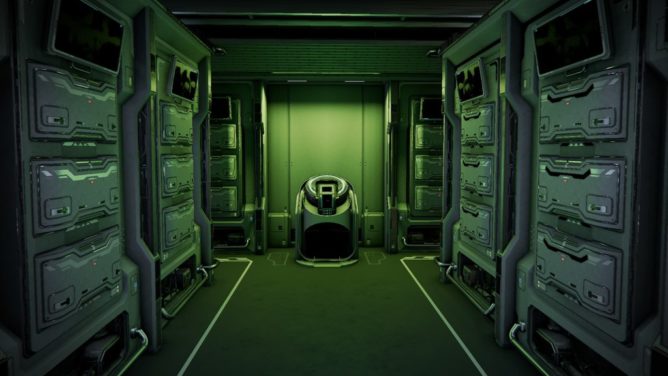
Getting into #x4foundations modding is a painful experience for a newcomer especially when on a clock (as in: Ain’t no time for this) so here is what I understood so far.
EgoSoft is one of the few companies that still hold on to a forum. They may be on social media but that’s just as news outlet. This is somehow also where the modding community resides, when it usually would find a place on it’s own “elsewhere”. Clever move and I applaud – at least I don’t have to join some private group on Facebook.
Sadly the forum has no search function to speak of especially not for a technical search or, gasp, a code search. So most mod developers usually host their stuff elsewhere – like scattered on GitHub, and only talk about their mods here and there. Connecting the dots (and users) is up to the initiate. In fact it helps slightly to utilize an external search engine that does a better job compared to the forum search itself. Go figure.
Eventually I stumbled by accident or luck over a Confluence installation that seems to act as some sort of Wiki and has indeed some pointers on modding for various X titles at https://www.egosoft.com:8444/confluence/ – and I am still uncertain if this is intended to be public or not. Sadly the X4 modding articles in there are short and of course available in English only. That wouldn’t be an issue if Confluence wouldn’t stubbornly insist in trying to render a page in my native language first, informing me helpful every time that no such entry exists and makes me switch the language every single time back to English. Well, I guess it is a community driven documentation system so I could scratch my own itch and translate stuff. Thing is I should understand what I’d be talking about in the first place, no?
Turns out that most know-how for X4 modding can in fact be learnt from X3 and X Rebirth in particular. Both are precursors and partially sandboxes for X4, from my understanding, so a lot of the information does also apply to X4. Sometimes with slight differences.
The most helpful place however is an unofficial Discord channel where many of the mod developers hang out and they do seem to be really friendly to newcomers asking the same old questions over and over again. I won’t bother with the invite link as this one is subject to change all the time but it can indeed be found with the dreaded forum search.
Anyway, let’s dive into some details. Mods, or as it should be called nowadays “extensions”, consist usually of so called MD Scripts, that’s short for Mission Director (and not Markdown) written in well formed XML Syntax, and LUA scripts (that seems to be the gaming industry standard – at least I keep hearing that). LUA itself is explained in great detail in the online documentation of LUA while game specifics are listed in varying detail on the Confluence mentioned above but that’s subject for another article. Also various assets may be floating around in the extension folders.
Now in theory XML and LUA are completely system independent so modding with different systems in mind should be a no brainer, right? Right?
Well, of course nothing is ever that easy. Thankfully the user CulunTse took the burden and wrote an article on all the caveats encountered so far: https://forum.egosoft.com/viewtopic.php?t=380912 (Steps to make your mod work on Linux+Mac) – it’s for X-Rebirth but the gist applies for X4 as well. So when writing mods make sure to use lower case only and don’t use special characters at all. Best not even use a white-space just to be sure.
<rant>Again Windows f****s us all over being the only system that is fine with "A==a" being true. Not even JavaScript manages this. And since X4 is a game and the majority of gamers (and mod devs) play on Windows we have to suffer from this yet again. The average mod is simply not compatible and broken for e.g. Linux users. Guess who gets the blame. The worst part is that another generation of developers will not see any problem with this behaviour.</rant>
So now we learnt that an extension consists mostly of XML and LUA files, so how comes that mods downloaded from Steam, e.g. to learn from, are riddled with various TXT files instead rendering your linter of choice useless because it won’t automatically parse a text file? Well that seems to be a Steam Workshop limitation not allowing certain file… extensions. So developers started to rename their files when uploaded to Steam. Yay, more confusion for man and machine (as in mankind – c’mon, it’s a lame allusion!).
Why I mentioned Steam now? Well, learning from existing extensions is the way to go. Also since some simply don’t work for Not-Windows users it’s up to myself to debug. The places to get extensions is usually from NexusMods (no thanks, still angry that they lost my user data years ago – still used by scammers) and Steam. Avid readers of my ramblings may know my especially sour spot of having purchased X4 on GOG (https://beko.famkos.net/2021/03/17/x4-cradle-of-humanity-for-linux-and-gog/) so downloading from the Steam Workshop is not as straight forward as it is for others. There are various so called “steam workshop downloader” that easy the pain somewhat.
But wait. The Steam Workshop file comes as DAT file. What is that again when I just talked about TXT files? Well, this is from my understanding a format by EgoSoft designed for Steam Workshop files for X Rebirth – also called a XRWS file. At least from https://github.com/Lighting/XRWSunpack – a tiny little project that helps unpacking the DAT files but has to be compiled before use. That’s usually a matter of issuing the make command after checking out the repository (or download the release file if you’re feeling lucky). Fair warning: It is somewhat rigid in the way the DAT file has to be named so you may have to adjust that by renaming. Ymmv.
Armed with that knowledge I was able to download and extract the awesome extensions_fireandsmoke_v107.dat extension that really spices up space fights with the effects we know and love from X Rebirth (or not). This one I could also drop in my user space folder under ~/.config/EgoSoft/X4/extensions/x4_fireandsmoke/ (again: case sensitive, important). The folder name matters because it is also hardcoded into the extension files itself and will fail to load various assets if changed. Interesting design choice.
Why this is noteworthy? Well apparently this does not work for all kinds of extensions. Some seem to work only when put in the game path /path/to/X4_Foundations/game/extensions/ where the game also stores official DLCs. Better keep that in mind. The gist seems to be that user space extensions are limited in functionality to prevent nefarious mods. Or so I hear. Maybe EgoSoft simply never got it working properly. There is more (conflicting) info hidden deep in that Confluence mentioned above.
So why go through all that trouble when an extension can simply be downloaded from e.g. GitHub? Well, I learnt the hard way: Also not as simple. For example many mods rely on one very important extension that can be found in the repository https://github.com/bvbohnen/x4-projects – a wild mix of various extensions and even a Pipe Server (more on that later). It’s the indeed impressive extension sn_mod_support_apis featuring a clever way to work around some UI modding limitations in X4, allowing lazy loading of further LUA scripts and even introduces a Pipe Server to interact with the game from the outer world – mostly used for more complex hot keys. A dream coming true and used by many other extensions as well.
Sadly it didn’t really work out of the box when checked out from GitHub and put in place at /path/to/X4_Foundations/game/extensions/sn_mod_support_apis/. There were various reasons for this. First of all: Case sensitive again. The XML files in the md/ folder must be lower case or X4 will simply ignore the files. Easily fixed though.
The next problem wasn’t that easy to identify and the reason for this is hidden in plain sight in this titbit of information from the synopsis:
A workaround is to load in custom lua files alongside the egosoft lua. This is done by editing one of a handful of ui.xml files in the ui/addons folders, adding the path to the custom lua file. These ui.xml files cannot be diff patched. The lua file must be given an xpl extension, and this xpl and the ui.xml must be packed in a “subst” cat/dat.
bvbohnen/x4-projects
Where this arcane know-how was acquired from in the first place I do not know. The gist is that some XML files are happily read by X4 (and can even be hot reloaded) while some can not. The ui.xml falls into the not so much category and since I have no idea how to create a cat/dat file (yet) I had to scrape the “subst” files from a release (Steam Workshop, NexusMod, GitHub release, you name it). Without it’s simply not read and ignored and this is also why no single debug line will ever be logged to give the (weary) initiate a hint what may be wrong.
After that mods relying on sn_mod_support_apis started working (or throwing traces at least). Awesome! Onwards to Pipes! Or Not! Because this part is Windows only. Why? Well, the Pipe Server uses a LUA feature to load a library from disk providing that pipe feature. And that project is written in C, compiled as a separate DLL and relying on Windows, of course. That makes even sense and I really can not blame the author for scratching the own itch only here. See https://github.com/bvbohnen/x4-projects/blob/master/extensions/sn_mod_support_apis/lua/c_library/winpipe.lua for details and to be fair the extension is written in a way that other features do still work so it’s not a total roadblock and in theory I can go back to be a happy gamer at this point.
Alas I want that Pipe feature, of course, so I have to come up with my own library at this point. It’s not a complex file but my C days are long past. So to spice this up I needed a crash course on how LUA is supposed to work. Script wise and all and I don’t think I was prepared for all this.
LUA is basically… ah frell, go and look it up yourself. In the end LUA scripts are interpreted by a VM. That would be LuaJIT (JIT – Just In Time) on Linux and this is why X4 is shipped with a file named libluajit-5.1.so.2. Sadly this is not the particular version of LuaJIT. It stands for an ABI compatibility version. In theory at least. My first goal to get the idea was to grab the source and compile my own libluajit. Should be a no brainer, right? Little did I know when I checked out the project from https://github.com/LuaJIT/LuaJIT.
I run a hexedit on the distributed library to get an idea what version is used and came up with 2_1_0_beta3. The commit 8271c643c21d1b2f344e339f559f2de6f3663191 of the LuaJIT project is tagged with that version so I went with that first.
Compile went smooth, beside some warnings, but X4 would stop dead throwing a Fatal Error at me that I’ve never seen before. Well, let’s fast forward to HEAD and try again and this time the game started but became stuck in main menu with unresponsive entries and missing labels (some said “Processing…”). So obviously X4 is not running vanilla LuaJIT and since this is under MIT licence I don’t think they even have to provide modifications. What now?
Thankfully some fellow gamer on Telegram, who doesn’t want to be named, pointed me in the right directions due to experience with LUA. An article over at https://developer.x-plane.com/article/luajit/ explains some major caveats with this and sure enough once I knew what I was looking for I found evidence here and here and here. (Yes, they have Jira as well – who would have guessed).
Lua engine was upgraded to LuaJIT 2.1 which comes with performance improvements as well as new language features (incl. some added Lua 5.2-specific features as well as some Lua 5.3 ones.
Just looking at the number of forks of LuaJIT on GitHub makes me dizzy so I went with the first recommendation https://github.com/openresty/luajit2 that also addresses the memory issue and also edited the file src/Makefile enabling some LUA 5.2 features by commenting in the line: XCFLAGS+= -DLUAJIT_ENABLE_LUA52COMPAT
And guess what, X4 launched with this and also started an older save game of mine just fine. I guess this works so I’ll keep that in mind in case I need some monkey patching to try stuff.
Next on that list? Find out how to write a loadable C library for LUA and adapt that Pipe Server.
At least gaming itself is easy as pie on Linux in 2021. Modding? Now so much.